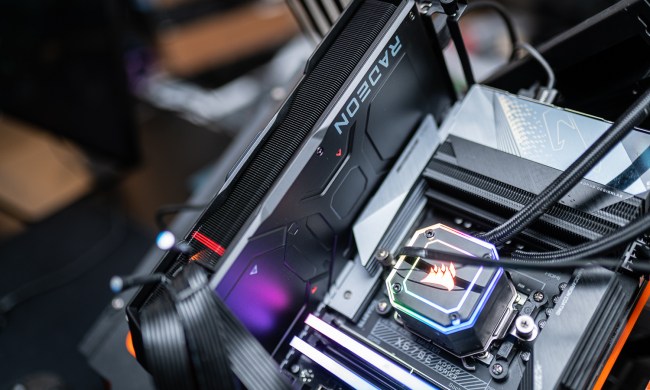AMD has lifted the curtain on the new version of FidelityFX Super Resolution (FSR), and this time around, it’s looking to be a more direct competitor to Nvidia’s DLSS. The aptly named FSR 2.0 promises higher image quality compared to the first version, and according to AMD, it can hold its own against native resolution.
AMD fans have eagerly waited for an upscaling solution to go toe-to-toe with Nvidia’s Deep Learning Super Sampling (DLSS). For now, though, all we have are a few screenshots from AMD. You can see FSR 2.0 at work in Deathloop below.

AMD will share more technical details about FSR 2.0 at the Game Developer’s Conference (GDC) at 10:30 a.m. PT on Wednesday, March 23. For now, AMD says that FSR 2.0 incorporates temporal (time-based) data and includes higher-quality anti-aliasing. According to the company, the new version delivers “similar or better than native image quality.”
The new version sounds closer to DLSS than the first version of FSR, but AMD says it’s achieving this image quality without dedicated machine learning hardware. Because of that, FSR 2.0 will maintain an open platform that works across graphics cards from AMD, Nvidia, and Intel (in supported titles).
AMD made big promises about FSR 1.0, and although it’s an impressive technology, it didn’t fully live up to expectations. We’re eagerly waiting for the chance to test FSR 2.0 when it releases in the second quarter of 2022.
AMD also released Radeon Super Resolution (RSR), which is available in the latest AMD Software driver. It’s a driver-level version of FSR for AMD graphics cards, and it works with any game. AMD showed off RSR in Warframe, which jumped from 108 frames per second (fps) at native 4K to 255 fps in the most aggressive mode.
RSR is basically FSR 1.0, fit with the same quality settings and similar performance improvements. It works with all games, but unlike FSR, it only works with AMD RX 5000 series and newer graphics cards. In a press briefing, AMD said it is working on updating RSR to work with Ryzen 6000 APUs in the future.
The upscaling tech is available in the latest AMD Software update. To enable it, all you need to do is turn on RSR in the settings and lower your resolution in game. RSR will kick in and automatically upscale the game to your monitor’s native resolution.
We took RSR out for a spin in Destiny 2, and you can see that comparison below. The left side is with RSR turned on, and the right side is with RSR turned off.

Subjectively, RSR is handling the image about as well as FSR does, and it works in any game. However, the rough edges of FSR still show up, especially in distant objects. We upscaled Destiny 2 from 1080p to 4K with RSR, and it worked well, but lower resolutions may struggle as the input resolution scales down.
With RSR, AMD has an answer to Nvidia Image Scaling (NIS). FSR 2.0 looks like it may answer DLSS as well, though we’ll have to wait until later in the year to test it ourselves.




